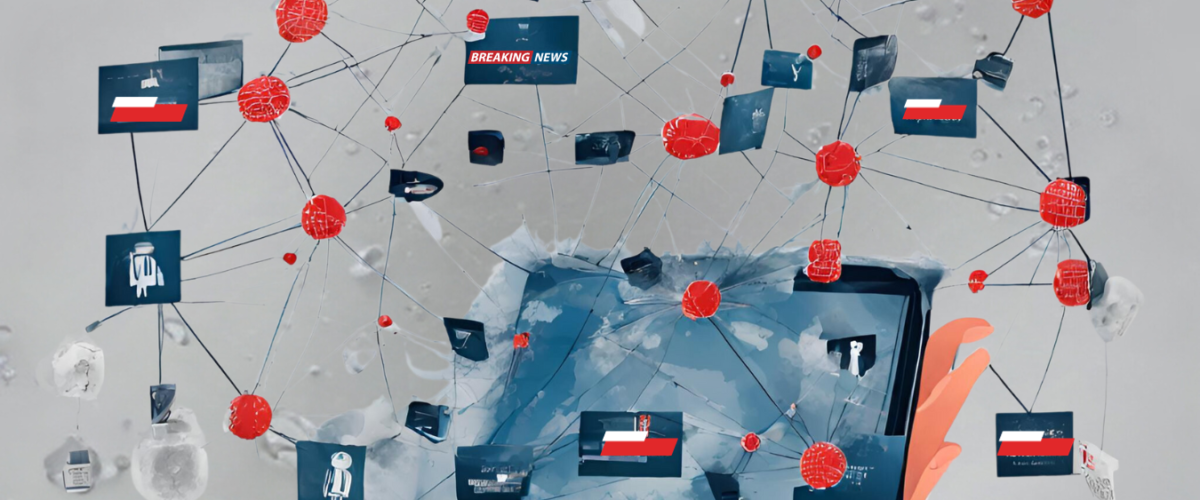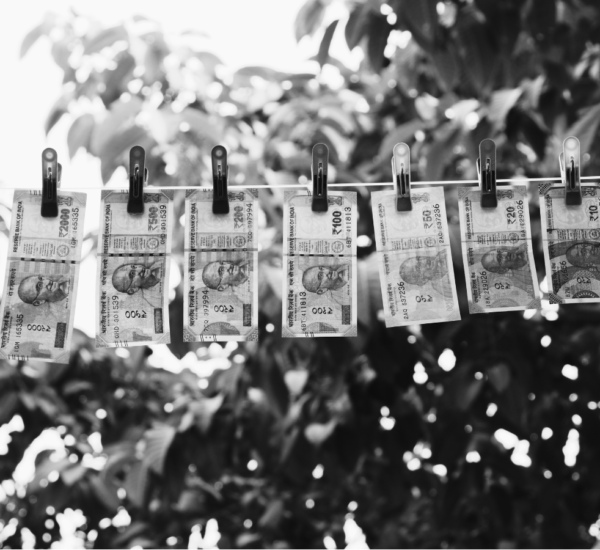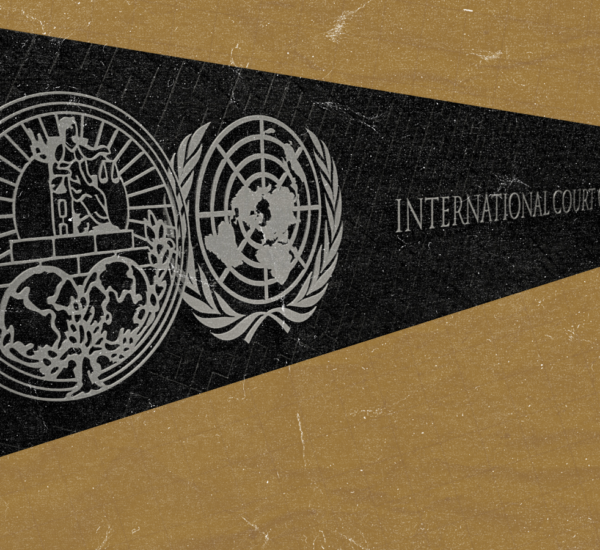This series analyses the changes proposed by the Criminal Law Bills in 2023. This article was first published as part of Project 39A’s Bharatiya Nyaya Sanhita Bill, 2023: A Substantive Analysis, a complete version of which can be accessed here.
This post analyses the implications of the newly-inserted provision criminalising making or publishing ‘false and misleading information jeopardising the sovereignty, unity and integrity of India’.
S. 153B of the IPC[1] has been recast as Cl. 195 of the BNS with an addition where Cl. 195(1)(d) criminalises the making or publication of false and misleading information jeopardising the sovereignty, unity and integrity or security of India. This offence is punishable with three years of imprisonment, or fine, or both. An action becomes prohibited by Cl. 195(1)(d) when the following elements are met- i) there must be some information which is made or published, ii) such information must be ‘false or misleading’ and iii) such ‘false or misleading information’ must have the impact of ‘jeopardising’ the ‘unity, sovereignty and integrity or security of India’. However, in light of the Supreme Court’s decision in Shreya Singhal v. Union of India,[2] Cl. 195(1)(d) may potentially bring up concerns over the reasonableness of this restriction on the freedom of expression as per the requirements of Art. 19 (2) of the Constitution.
I. Overbroad and vague provision
In Shreya Singhal, the Court struck down s. 66A of the IT Act[3] which penalised anyone who sent electronic information which could be ‘grossly offensive or had menacing character’, or messages sent for the purpose of ‘causing annoyance or inconvenience’ for violating the requirement of reasonable restrictions to the freedom of expression under Art. 19(2). While doing so, the Court held that any law restricting the freedom of expression could not be phrased vaguely,[4] but had to be precisely and narrowly worded, in a manner that enabled the public to reasonably understand and foresee the activities being prohibited. Further, it held that Art. 19(2) can prohibit only expression which incites harm, disorder or violence, and which has a direct relation to the violence caused.[5] In doing so, the Court distinguished between three categories of speech including- i) the discussion of ideas, ii) the advocacy of ideas (however offensive or shocking) and iii) speech inciting another to act upon an idea which could directly cause disorder or violence. A reasonable restriction under Art. 19(2) can then only extend to the third category of speech-speech which incites, as opposed to jeopardises.
The phrasing of Cl. 195(1)(d) raises three potential causes for concern. First, the lack of definition for the phrases ‘false and misleading’, and ‘jeopardising’ renders the clause vague and in need of clarity on the nature and scope of the information the publication of which is being prohibited. The unqualified nature of ‘false and misleading’ under Cl. 195(1)(d) leaves it open to multiple interpretations, and is hence entirely left in the hands of discretionary decision makers. Similarly, the word ‘jeopardises’ can cover a wide, unforeseeable range of consequences. The consequences of such publication, which can be seen as ‘jeopardising the unity, sovereignty and integrity or security of India’,[6] remain unclear, leaving the public with little means to foresee how the consequences of such information may be construed as jeopardisation. Second, the provision nowhere indicates that such publication should be with the intention of causing ‘jeopardy’/harm, as is required under Art. 19(2). Further, Cl. 195(1) (d) extends its ambit to even the ‘making’ of such information, denoting that the mere creation of such material without publication can attract punishment. In effect, criminalising the mere making of such information can potentially subvert the constitutional requirement to directly incite others to cause violence.[7]
II. Impermissible executive and judicial subjectivity
The Information Technology Amendment Rules 2023[8] – which uses the same phrasing (‘fake’, ‘false’ and ‘misleading’) for the issuance of directions blocking information so identified by a government fact checking unit- is currently under challenge before the Bombay High Court for violating the requirements of Art. 19(2).[9] Cl. 195(1)(d) extends the use of this constitutionally suspect phrasing beyond the digital medium, and expands the degree of State intervention for the same by criminalising such information (as opposed to merely blocking it).
This provision is the latest in a series of interventions seeking to regulate information disorder in India. Prior regulatory efforts have included orders issued under s. 69A, IT Act,[10] and the aforementioned impugned Rules. Despite the need to regulate widespread information disorder and to mitigate its subsequent harms, providing a definition or clear cut identifiers for disinformation has remained a highly difficult task[11] given the subjectivity of assessing truth or falsity. This is not to say that criminal law does not address the issue of assessing what qualifies as false information. It does so in other contexts, including false statements on oath, giving of false evidence etc.[12] However, unlike Cl. 195(1)(d), provisions requiring the assessment of false information clarify requirements including an accused’s belief or knowledge and the use of such falsehood to cause the harm stipulated.
The lack of important qualifiers in Cl. 195(1)(d) complicates matters given the peculiarities of information disorder in a social ecosystem. Additionally, there are varying categories of speech that can be covered under ‘false and misleading’ which involve varying degrees of liability. False information in the context of information disorders may be classified as either disinformation or misinformation. While disinformation is the publication of false information with full knowledge/belief in its falsity and with the aim of causing some harm[13] misinformation refers to the mere reproduction or dissemination of such information, and does not necessarily require the level of intent in disinformation.[14] However, the lack of distinction between misinformation and disinformation under Cl. 195(1)(d) raises questions on the degree of liability necessary to attract sanction[15] and it is unclear whether the provision is also directed at persons who may only be strictly liable for misinformation,that is, without intention or knowledge of the wrongfulness of the act.
III. Ineffective approach
In light of these requirements, and the context which Cl. 195(1)(d) seeks to address, the criminalisation of ‘false and misleading’ information highlights three concerns. There is first the onerous task of balancing the constitutional requirement to frame precisely worded penal provisions against the contextual challenge in defining disinformation (and perhaps misinformation). Even in the instance that an ideal provision (which achieves such balance) is framed, such provisions can only cover a narrow range of actions within the larger ecosystem of information disorder. Commentators have suggested that in such a scenario, a penal provision may remain largely inadequate in regulating the problem of information disorder in society.[16] The challenges and the weaker potential of criminal law in ultimately addressing the issue effectively casts doubt on the regulatory mechanism (criminalisation) adopted, and prompts questions on the need for alternative regulatory approaches which are more effective and less restrictive on questions of life, liberty and expression.
[1] S. 153B, IPC criminalises specific actions which involve imputations or assertions prejudicial to national integration.
[2] (2015) 5 SCC 1.
[3] S. 66A, IT Act, 2000.
[4] Chintaman Rao v. State of Madhya Pradesh 1951 AIR 118: “The law even to the extent that it could be said to authorize the imposition of restrictions in regard to agricultural labour cannot be held valid because the language employed is wide enough to cover restrictions both within and without the limits of constitutionally permissible legislative action affecting the right”.
[5] Superintendent, Central v. Ram Manohar Lohia 1960 SCR (2) 821: “there must be proximate and reasonable nexus between the speech and the public order”.
[6] Generally, the words ‘sovereignty, integrity and unity’ of India have been interpreted by the courts in various contexts, including constitutional interpretation, defining the scope of anti-terror legislations [such as the POTA] and other laws relating to national symbols and imagery [Prevention of Insults to National Honour Act, 1971]. The provisions pertaining to the prohibition of acts prejudicial to the unity, sovereignty or integrity of India in these legislations have typically criminalised specific acts as being prejudicial per se. For example, s. 15 of the UAPA. However, the word ‘sovereignty’ has been difficult to interpret, given the conceptual variations inherent to it.
[7] Possession of offensive and incendiary literature has been dealt with by the Supreme Court in other contexts such as deciding whether such possession amounts to a terrorist act under s. 15 of the UAPA, or constitutes membership in a banned organisation under s. 10 of the UAPA. In July 2023, the Court in Vernon Gonsalves v. State of Maharashtra, Criminal Appeal No. 639 of 2023, held that mere possession of such literature alone could not be construed as a terrorist act. However, whether such possession can attract a penalty under s. 10 remains unclear post the review in Arup Bhuyan v. State of Assam, Review Petition (Criminal) No. 417/2011.
[8] Information Technology (Intermediary Guidelines and Digital Media Ethics Code) Amendment Rules, 2023.
[9] Kunal Kamra v. Union of India, WP(L)/9792/2023.
[10] X Corp v. Union of India, Writ Petition No. 13710 of 2022 (Karnataka High Court): where the petitioner, an intermediary platform, had challenged the directions issued under s. 69A of the IT Act to block specific content and accounts for sharing ‘false’ and ‘misleading’ information.
[11] Noted by the Canadian Supreme Court in R v. Zundel [1992] 2 SCR 731 at para 136; UN Special Rapporteur on Freedom of Expression, Submission on Annual Thematic Report on Disinformation, March 2021, Centre for Law and Democracy (2001), pg. 3.
[12] For example, ss. 171G, 177 (furnishing false information), 181 (false statement on oath or affirmation to public servant authorised to administer an oath or administration), 191 (giving false evidence), IPC. The provisions come with further qualifiers including the requirement to prove the accused’s knowledge or belief in the falsity, and the intention to use such falsity to cause the harm that the provisions seek to prevent. The offence in this case requires a mens rea element, as opposed to Cl.195 (1) (d), BNS.
[13] UN Special Rapporteur on Freedom of Expression, Submission on Annual Thematic Report on Disinformation, March 2021, Centre for Law and Democracy (2001), pg. 3.
[14] UN Special Rapporteur on Freedom of Expression, Submission on Annual Thematic Report on Disinformation, March 2021, Centre for Law and Democracy (2001), pg. 3.
[15] Criminal sanctions may be attracted for varying levels of liability. While the general rule requires both mens rea (purpose, intention and knowledge from the part of the offender on the wrongfulness of the offence) and actus reus for criminal liability, the degree of liability may be lowered in specific offences. For example, specific offences relating to environmental degradation may fall under strict liability, which only requires the commission or omission of an act, and not intention.
[16] Rebecca K Helm & Hitoshi Nasu, Regulatory Responses to ‘Fake News’ and Freedom of Expression: Normative and Empirical Evaluation, Human Rights Law Review, Volume 21, Issue 2, June 2021, pgs. 302–328.





